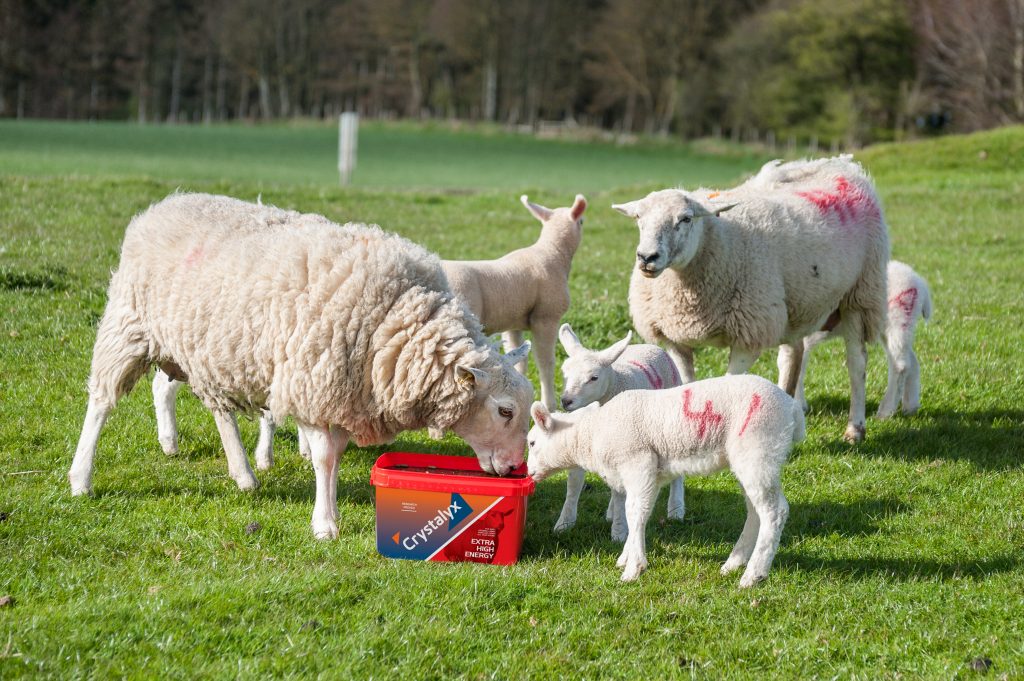Will, Stephen and Alan Vose farm with their father Bill at Blundell House Farm near Ormskirk where the main enterprises are arable crops including maincrop potatoes and a 1000 ewe flock, split into January and March lambing groups.
The Suffolk x Mule ewes are put to Hampshire tups and average 1.65 lambs sold per ewe across the two groups. “We like the Hampshire as it is very fast maturing and piles the weight on,” comments Will Vose. “This suits our system of finishing early lambs and means we get a good sized lamb, as we prefer a heavier lamb than a better grading lamb. The majority are sold at R grade. We have tried other breeds with better confirmation but they have either been slower or lacking the wool needed on the flat, relatively shelter-free fields.”
A split lambing system is used to make best use of the buildings, forage and labour. Early lambs are sold straight off the ewe at 12-14 weeks old at an average of 19.5kg, targeted for when supermarkets are switching to British lamb.
The later lambs will leave the farm at a similar age in early July. It is important to move them on as the farm is prone to drying up.
The flock is broadly split by age with younger ewes lambing later because the older ewes generally come to the tup quicker and are more prolific early.
The January lambers are house early to ensure sufficient forage is available for the later lambing flock. The early lambing flock is scanned in early December and ewes carrying multiple lambs are housed while lambs carrying single stay out at grass until point of lambing or until grass becomes availability becomes short. All ewes will have had access to Crystalyx Extra High Energy blocks since November and this continues through to lambing whether housed or outside.
“The blocks are the most effective way to complement grazing or haylage,” Will continues. “We have used other blocks in the past but found that intakes were far higher than expected which meant costs rose and we also saw high wastage levels with these blocks when fed outside.
“The molasses based blocks are more durable and we find we get more consistent intakes which is important as the blocks are a feed and a way to reduce concentrate use, not an extra. The blocks supplement the forage well and really keep condition on the ewes.”
The housed early ewes are fed haylage and 0.25kg of Ewe Max nuts. They are in groups of 45 ewes with one 22.5kg block per group. Concentrate feed rate will rise to 1kg/day closer to lambing. The high DUP nuts support higher milk yields.
“We see a decline in block intakes as concentrates increase from around 90g/ewe/day down to closer to 15g which implies the ewes take what they need rather than taking the blocks out of habit. As single carrying ewes get less concentrate they tend to take more of the blocks.”
Ewes and lambs are turned out at 7-10 days old onto grass and brassicas. The Voses’ grow fodder beet and Swedes but also feed arable leaf waste from local brassica growers. Lambs have access to creep until 9-10 weeks before moving onto a finisher diet. The fastest growing lambs get relatively little finisher.
It is important the early lambed ewes move out quickly as space is limited and is needed for the later lambing flock who have overwintered on brassicas, grazing and Crystalyx blocks, with one block per 100 ewes. When housed, concentrate feeding is the same as for the early lambing flock.
“The system allows us to make best use of resources and hit the best priced market while controlling feed costs,” Will Vose continues. “It is a relatively simple system but delivers the results and proves you can produce a strong early lamb profitably.”
Interested in purchasing Crystalyx? Find your nearest stockist here.
Follow us on Facebook, Twitter and Instagram.


